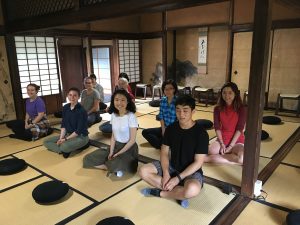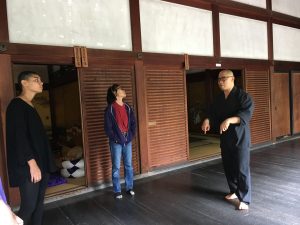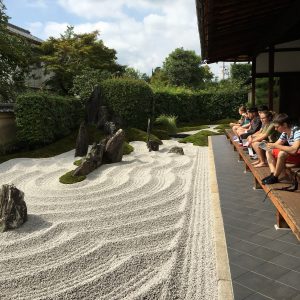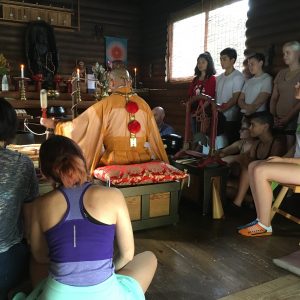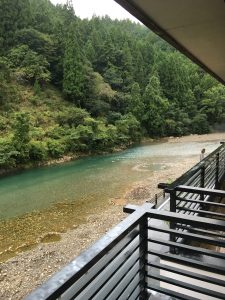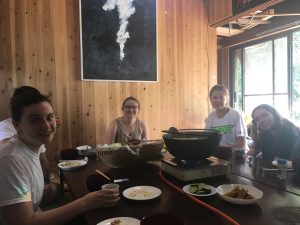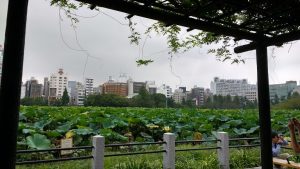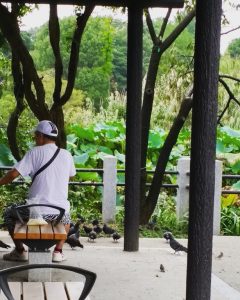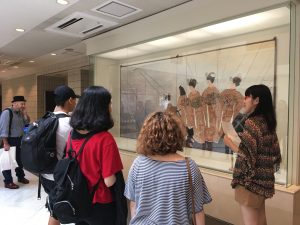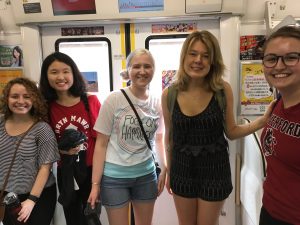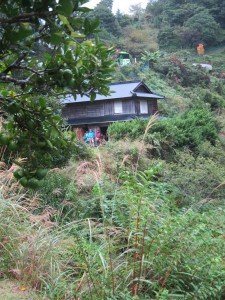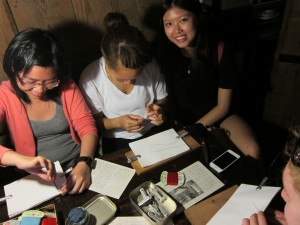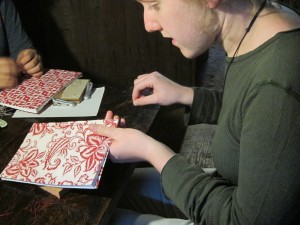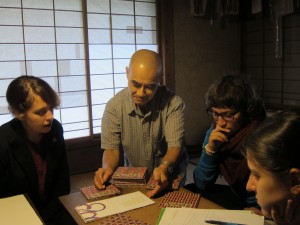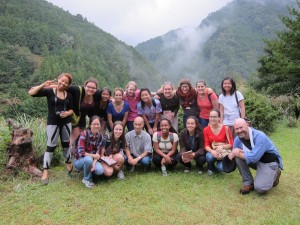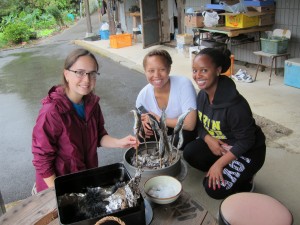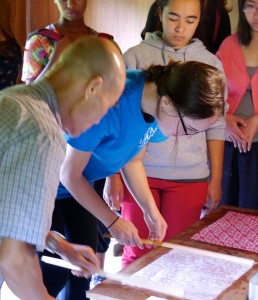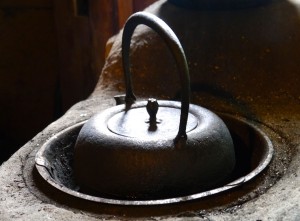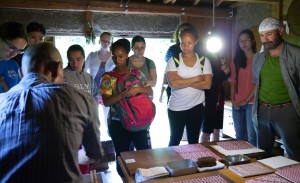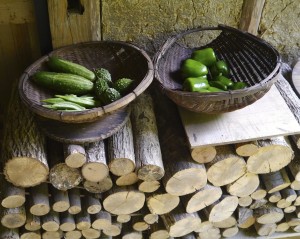This is a guest post by Alena Klindziuk ’18
Stepping out of the subway into the damp, foggy morning, I knew that Tsukiji Market is not going to be like the other tourist attractions in Tokyo. A smell of fish filled the air. A colorful crowd turned left and crossed an intersection. My friend Eriko and I followed. We were brought to a row of decrepit, two story houses. Japanese ladies shopping for fish, wide-eyed tourists looking for authenticity, and hungry Tokyo residents looking forward to a fresh sashimi lunch, were trying all to squeeze between the rows of shops buildings. Eriko and I joined them.
The shops sold Japanese delicacies, kitchen appliances and souvenirs: tamagoyaki, butcher knives, bags of rice. The tiny restaurants had large queues of people waiting to get in. These were the cheaper ones – TripAdviser recommended. TripAdviser did not disappoint. The restaurant we went for lunch was so tiny it was difficult to get to our seats at the bar without accidentally kicking seated customers in the back. Yet, the raw fish donburi we got was on point. I tried sea urchin for the first time. The mustard-colored, gooey mass turned out not to be my favorite sashimi. But it was an experience.
Eriko and I went through all the rows shops. I bought Shitaki mushroom tea, but didn’t have enough courage to get the seaweed one. We then went to the portion of the market where fish was sold. The fish auction takes place early in the morning, so we only saw the aftermath. There was still some smaller fish being sold. Tiny electrical trucks stealthily zoomed back and forth carrying water, tubs, and tools. One could easily get run over without being careful. The floor was wet. So were most of the counters and surfaces. Men in rubber aprons and gloves were out and about wiping, cleaning, drawing rickshaw-like carts. It was dark. The ancient roof of the market did not allow any sunlight to pass. It is sad to know that old fish market will soon be shut down and moved to a new place. However, once upon a time Tsukiji was also a new establishment. I am excited to see the new fish market that will take Tsukiji’s place

